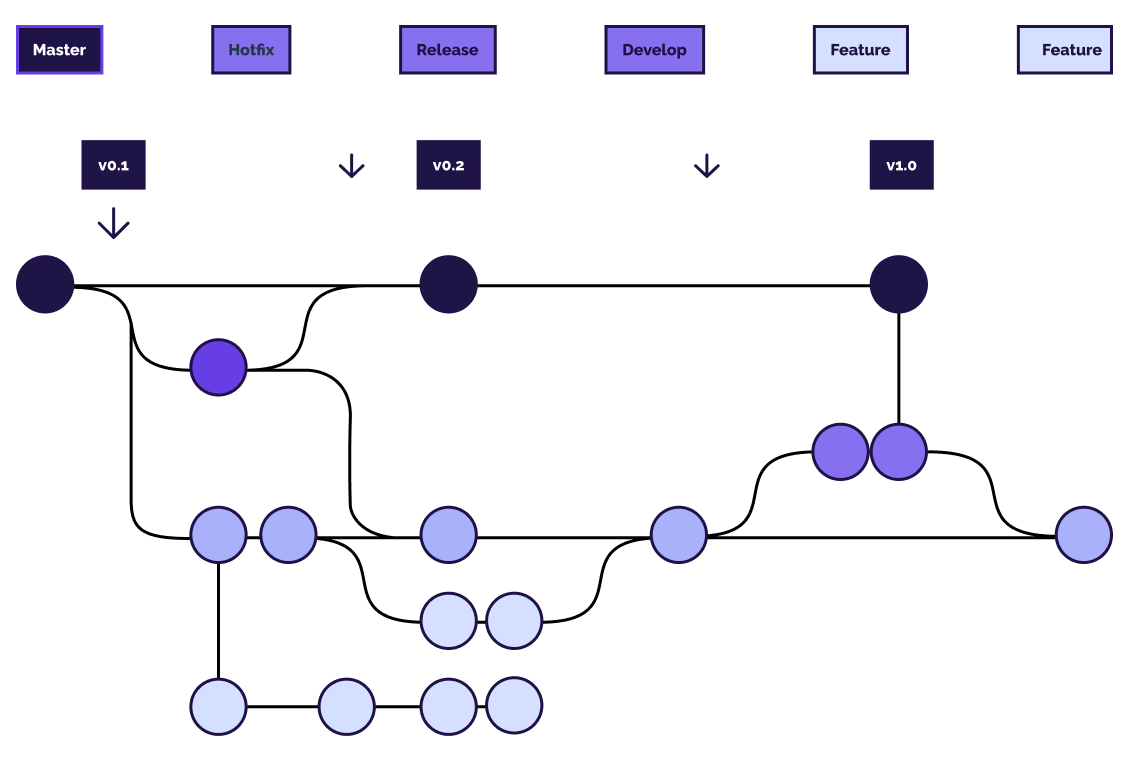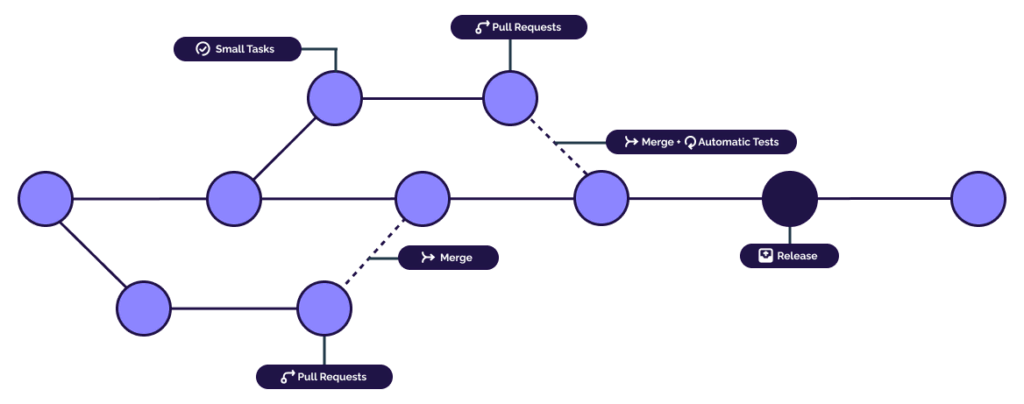Whenever you’re creating in WordPress and creating your individual customized plugin or theme, it’s essential use model management. It makes it simpler to maintain monitor of adjustments in your code and the evolution of your undertaking.
To separate totally different offshoots of labor in your code, you want growth branches. The way you handle these branches can actually make or break your growth course of.
This manner of working with branches known as a workflow. It helps stop inefficiencies, wasted time, and even damaged code that may in any other case happen as a result of poor department administration or lack of coordination inside your group.
I’ve labored with two sorts of workflow: Git Circulation and trunk-based growth. I’ll share my expertise with every and the way trunk-based growth has emerged as a greater resolution in WordPress growth.
Issues with Git Circulation
For a very long time, I’ve labored with the Git Circulation methodology – a setup designed so your fundamental department consists solely of code for brand spanking new variations, whereas a separate growth department consists of all the continuing adjustments to totally different options.


This will get sophisticated whenever you need to spin off many new strains of labor and options from the event department, and issues can get even messier whenever you create new variations, as this additionally entails new branches.
Because the undertaking progresses, it turns into tougher to maintain monitor of the place you’re and the way your plugin growth is progressing. Plus, you find yourself doing extra handbook checks when merging in growth branches.
Additionally, growth branches can typically have incomplete code that may by accident get merged into the primary department.
Sometimes, Git Circulation consists of 5 sorts of branches: fundamental, develop, characteristic, launch, and hotfix, every serving a unique function:
- Primary: That is production-ready code. It ought to be clear, error-free, and solely merged from examined branches.
- Develop: Runs parallel to fundamental, holding code from varied branches. It could embody unfinished code and ought to be totally examined earlier than merging into fundamental.
- Function: Used when engaged on new options – most likely the most typical department kind.
- Launch: A pre-production department. In easier workflows, this may be skipped, and develop can be utilized to prep for manufacturing as an alternative.
- Hotfix: Created immediately from fundamental to repair bugs in manufacturing. As soon as fastened, it’s merged again into each fundamental and develop to forestall recurring points.
Whereas Git Circulation was one of many first structured strategies on the market, it brings its personal problems:
- It may possibly get overly advanced.
- Too many branches may cause confusion throughout growth.
- Outdated characteristic branches would possibly change into outdated and tougher to replace.
- Merging characteristic branches into growth can set off conflicts as a result of incomplete code.
- The place do you run your automated exams – in develop or launch?
Finally, this workflow would possibly make growth extra convoluted, leaving groups not sure of the place to create new branches or how far alongside the undertaking is.
Trunk-based growth
TBD (trunk-based growth) is a workflow constructed round a single fundamental department with steady code. From it, subtasks are created in short-lived branches which might be deleted after growth, automated testing, and code evaluate are full.
This methodology is super-efficient for department administration since outdated branches are deleted recurrently. The concept is to combine totally different developments extra regularly, serving to the undertaking evolve with each merge.
Plugin Examine (PCP) is a good instrument for constructing WordPress plugins which might be standards-compliant. Contributing to it helped me uncover the TBD model management workflow that considerably improves ensuing plugin high quality – it’s safer, extra error-free, and higher built-in with automated testing.
Automated testing is obligatory on this workflow.
TBD pairs completely with test-driven growth (TDD), the place exams are written earlier than the code. This enables for early validation throughout growth.


Primary advantages of writing exams earlier than coding:
- Improved high quality: You’re compelled to think about preliminary necessities and design earlier than writing code.
- Added security layer: Ensures adjustments received’t break current options.
- Much less debugging time: Checks push your code to its limits, making it simpler to identify points.
- Higher plugin design: Checks spotlight potential future points.
- Simpler refactoring: Performance is verified routinely.
As soon as your code and exams are prepared, it’s time to make a pull request – that is the place automated exams kick in to make your code extra sturdy.
In conclusion, TBD has drastically impacted the WordPress ecosystem by making it simpler to check throughout growth. That is super-important now that plugins and themes are getting more and more advanced and wish automated testing greater than ever. TBD is the workflow we use with the Plugin Examine plugin, which lets us create a set of automated exams each time we develop one thing new. That manner, our code is far more dependable with every new model.
How do you get began?
Simply observe these steps to get it up and working!
- Clear up any outdated growth branches for those who had a earlier repo. If it’s new, simply create one fundamental department – you possibly can name it trunk or fundamental.
- Coordinate along with your group in order that for each job, they all the time create a well-documented subject first. From there, create a department. GitHub makes it straightforward with the toolbar on the proper. Attempt to hold duties small and manageable.
- Arrange automated exams to your repo. You possibly can take a look at the Plugin Examine repo for plenty of automation examples.
- Whenever you’ve completed growth on every department, create a pull request. This allows you to evaluate new code earlier than it will get merged into the primary department. If you can also make it in order that a minimum of one or two individuals evaluate the code earlier than merging it into the primary department, even higher.
And this turns into a steady, repeatable course of.
Have you ever set this up in your plugin growth? Do you suppose it improves your workflow? Tell us within the feedback under.










